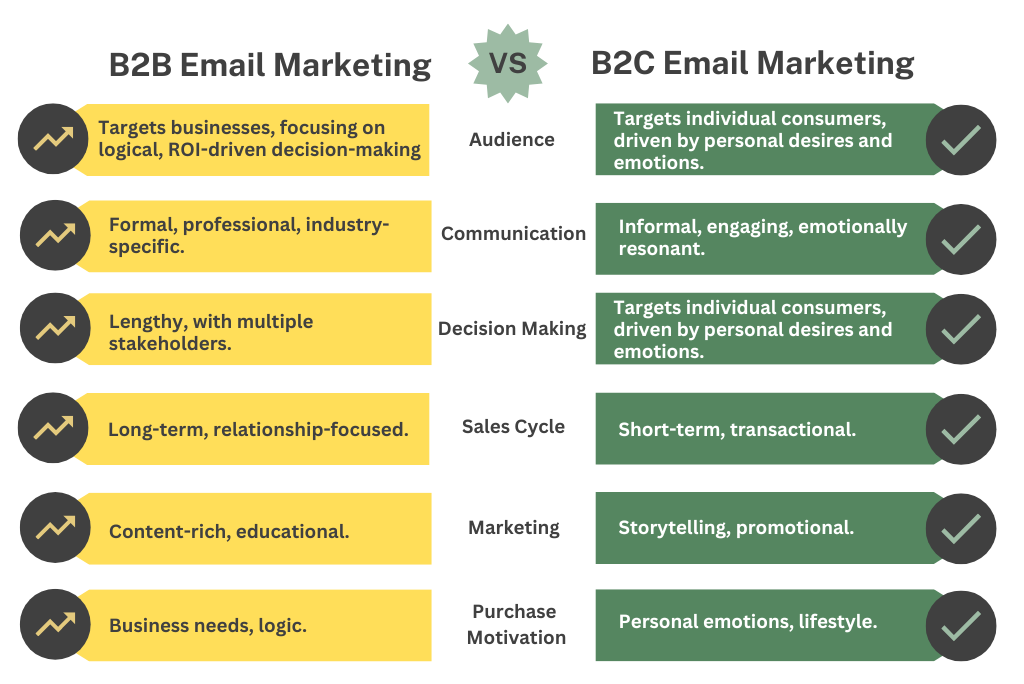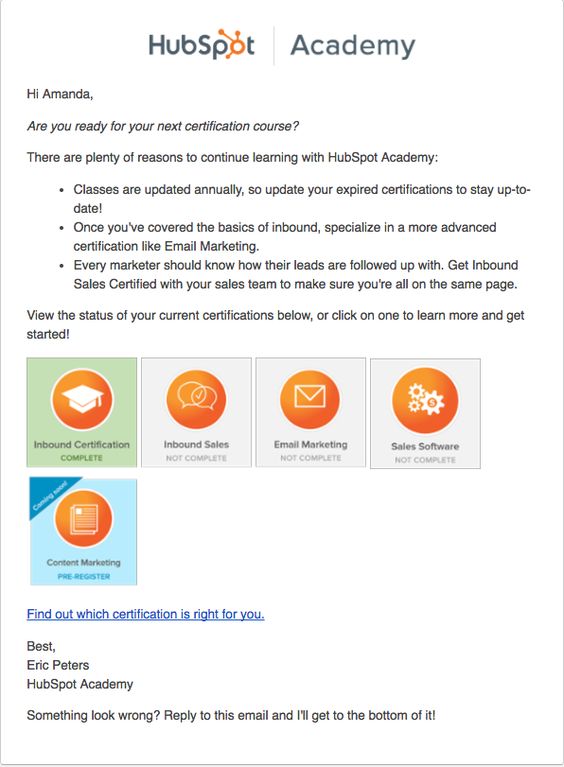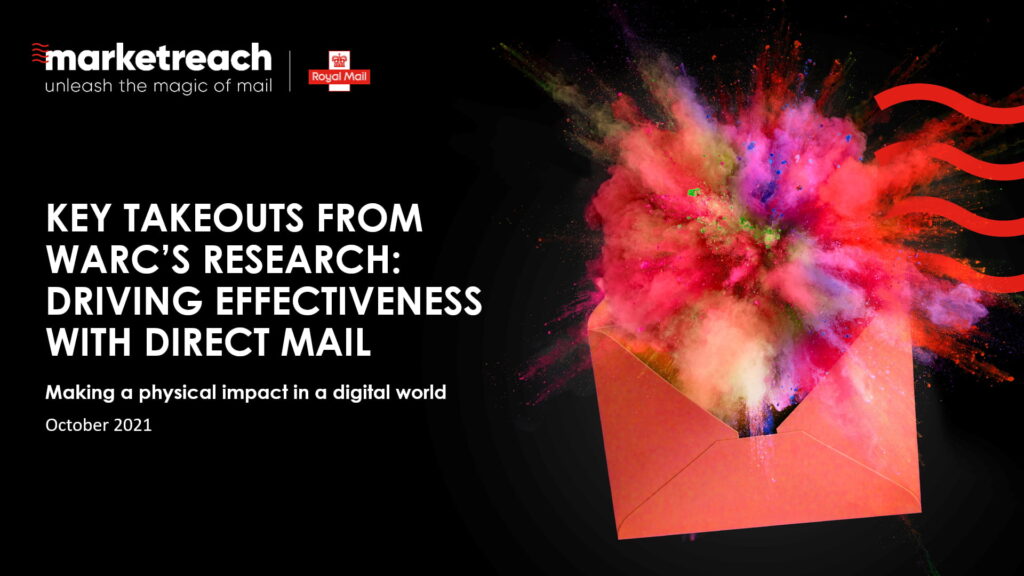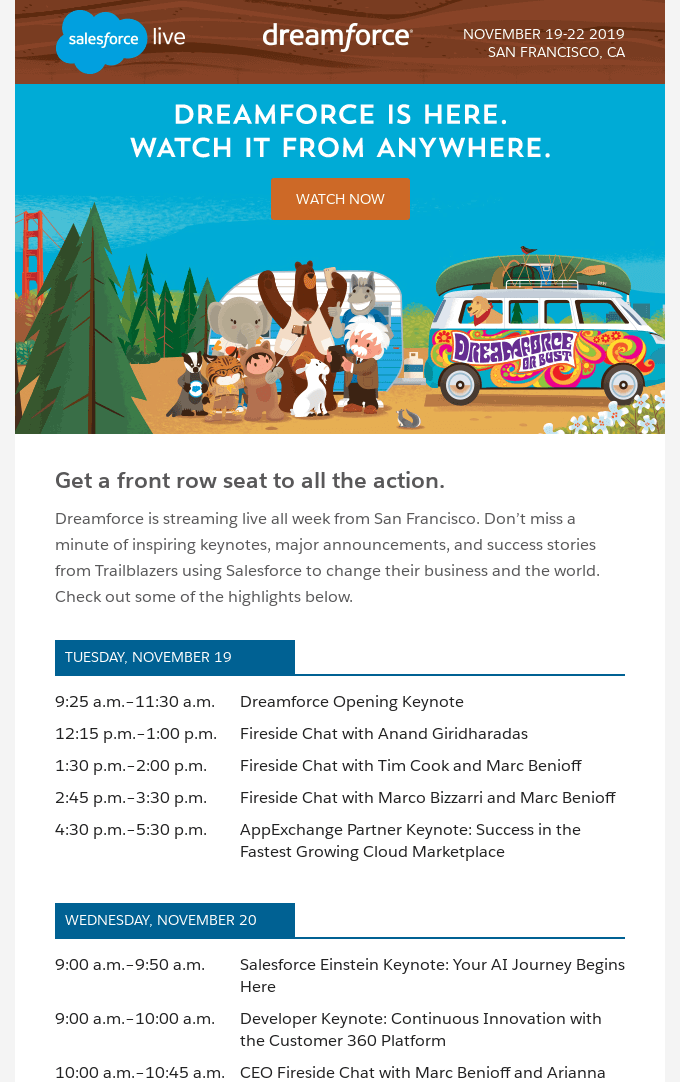B2B email marketing has become essential in business-to-business communications, offering an efficient way to engage with businesses in an increasingly digital B2B landscape. This approach, distinct from B2C marketing, emphasizes logical, value-driven interactions and focuses on strategic, content-rich communications for a professional audience.
Essential for cultivating leads and establishing enduring connections, B2B email marketing is pivotal in overseeing extended sales cycles and high-stakes transactions, achieving noteworthy business results through focused and personalized outreach.
B2B Email Marketing
What Is It?
B2B email marketing is a strategic approach used by businesses to communicate with other businesses. Unlike traditional or B2C email marketing, which targets individual consumers, B2B email marketing focuses on meeting the needs of other companies or/and key decision-makers at those companies.
Its objectives include lead generation, nurturing business relationships, and driving conversions through tailored, informative, and professional content. This form of email marketing typically involves longer sales cycles and requires content that is more detailed and focused on providing value and solutions to business-specific problems.
The emphasis is on establishing trust and demonstrating expertise, making it crucial for developing long-term business relationships. Therefore, the strategies employed in email marketing for B2B are distinctively different from consumer-focused email marketing tactics.
B2B vs B2C: What’s the Difference
Understanding the distinctions between B2B (Business-to-Business) and B2C (Business-to-Consumer) email marketing is crucial for crafting effective campaigns tailored to each audience. These differences largely stem from the nature of the target audiences and the communication approaches required for each.
1. Target Audience:
- B2B: Targets other businesses, involving transactions between companies. The focus is on the needs, interests, and challenges of individuals who make decisions on behalf of their organizations.
- B2C: Targets individual consumers. These transactions are more personal, focusing on the needs and wants of individual customers.
2. Communication Style:
- B2B: More formal and professional. Communications often involve detailed, industry-specific jargon, emphasizing efficiency and ROI.
- B2C: Generally more informal and engaging. The language is simple and aims to connect emotionally with the consumer.
3. Decision Making Process:
- B2B: Involves a longer, more complex decision-making process with multiple stakeholders. Decisions are based on business needs and potential ROI.
- B2C: Decision-making is usually quicker, driven by personal desire, price, and emotional factors.
4. Relationship and Sales Cycle:
- B2B: Longer sales cycles, focusing on building long-term relationships and repeat business.
- B2C: Shorter sales cycles, with an emphasis on single transactions and customer loyalty.
5. Marketing Strategy:
- B2B: Involves content marketing, educational resources, and relationship-building strategies. Marketing efforts are geared towards demonstrating value and expertise.
- B2C: Relies more on brand storytelling, emotional appeal, and promotional tactics.
6. Purchase Motivation:
- B2B: Driven by logic, business needs, and financial incentives.
- B2C: Influenced by personal emotions, desires, and lifestyle preferences.
Understanding these differences is crucial for businesses in tailoring their approaches and strategies to effectively reach their respective audiences.
While B2B email marketing is characterized by its informative, professional approach aimed at slowly building a business relationship, B2C email marketing tends to be more direct and emotionally driven, focusing on quick conversions and personal engagement. Understanding these differences is key to developing successful email marketing strategies tailored to each type of audience.
Myths About B2B Email Marketing
Several myths surround B2B email marketing, which can lead to misconceptions about its effectiveness and execution:

Image by Freepik
B2B Buyers Do Not Pay Attention to Your Emails
Contrary to the myth that B2B buyers do not pay attention to your emails, the reality is quite the opposite. B2B buyers often heavily rely on email communications as a key source of information to guide their purchasing decisions.
Unlike B2C consumers who might be swayed by emotional appeals, B2B buyers are looking for emails that provide substantial value, clarity, and relevance to their specific business needs. Therefore, when email marketing for B2B is executed with a focus on delivering relevant and informative content, it is more likely to garner attention and engagement.
This can include industry insights, product updates, or case studies that demonstrate clear business value. Effective B2B email strategies ensure that each communication is purposeful and resonates with the professional needs of its audience.
B2B Email Campaigns Are Far From Creativity
There’s a common misconception that B2B email campaigns lack creativity, but various B2B email marketing examples prove otherwise. While it’s true that B2B emails need to maintain a degree of professionalism, infusing creativity is not only possible but beneficial. Creative storytelling, engaging visuals, and personalized content can significantly enhance the effectiveness of B2B email campaigns.
For instance, a well-crafted narrative illustrating a client’s challenge and the solutions provided can be more compelling than a straightforward product description. Adding interactive elements like infographics or videos can also make the emails more engaging. By blending professionalism with creative flair, B2B emails can stand out in a crowded inbox, capturing the interest of business professionals and conveying the message more memorably.
Mobile Optimization Is Not Required in B2B Emails
The belief that mobile optimization is not necessary for B2B email marketing is a significant oversight. With the increasing use of smartphones in the professional realm, ensuring that your emails are mobile-friendly is as crucial in B2B as it is in B2C. Many business professionals routinely check their emails on mobile devices, and a non-optimized email can lead to poor user experiences and potentially lost engagement opportunities.
Mobile optimization involves designing emails that are easily readable on smaller screens, with clear calls to action and responsive design elements. This ensures that regardless of how the email is accessed, the content is accessible and engaging, making it an essential component of effective marketing in B2B.
Effective B2B Email Marketing Strategies
Why Do You Need It?
The importance of B2B email marketing strategies in achieving business objectives cannot be overstated. In the B2B realm, where the sales cycle is often longer, and decision-making processes more complex, email marketing serves as a crucial tool for nurturing leads and building lasting relationships.
Effective B2B email marketing strategies enable businesses to stay top-of-mind with their prospects, provide valuable information, and guide them through the sales funnel. Email marketing in the B2B context is not just about sending out promotional content; it’s about establishing credibility and trust. By consistently delivering useful content, businesses can position themselves as industry leaders and trusted advisors, thereby influencing purchasing decisions and driving business growth.

Image by Freepik
Where to Start? Email Marketing Best Practices
Creating a successful B2B email marketing strategy involves a series of well-planned steps:
Define Your Goals
When developing a B2B email marketing strategy, defining your goals is the foundational step. These goals could vary significantly, from generating new leads and nurturing existing prospects to enhancing brand awareness or boosting customer engagement.
It’s crucial to establish specific, measurable, achievable, relevant, and time-bound (SMART) goals. For example, if your objective is lead generation, set a target for the number of leads you want to capture within a specific timeframe. If it’s about nurturing prospects, your goal might be to increase engagement rates by a certain percentage. Clear and well-defined goals provide a focused direction for your email campaigns and form the basis for measuring success.
Determine Your KPIs
Key Performance Indicators (KPIs) are essential metrics that help you track the progress of your email marketing campaigns against your defined goals. Common KPIs in email marketing include open rates, click-through rates, conversion rates, and lead engagement levels. For instance, if your goal is to improve customer engagement, KPIs like email open rates and click-through rates can be indicative of how engaging your content is.
Regular monitoring of these KPIs will not only give you an insight into the effectiveness of your campaigns but also provide valuable data for ongoing optimization and strategy refinement.
Write Compelling Subject Lines
The subject line is the first point of contact between your email and the recipient, making it a crucial element of your campaign. A compelling subject line should be concise, clear, and appealing, designed to pique curiosity or offer immediate value.
It should reflect the core message of your email and align with the interests or pain points of your target audience. A well-crafted subject line can significantly improve open rates, thereby increasing the chances of your message being read and acted upon.
Use Email Marketing Segmentation
Segmentation in email marketing allows for the customization of messages to suit specific segments of your audience. By categorizing your email list based on criteria like industry, job role, company size, or past behavior, you can tailor your content to be more relevant and engaging for each group. This targeted approach not only increases the effectiveness of your campaigns but also ensures that your emails resonate more deeply with your audience, leading to higher engagement and conversion rates.
Build Your List Organically
Building an email list organically is an essential strategy in B2B email marketing, as it ensures that your audience comprises individuals genuinely interested in your brand and its offerings. This section of your strategy is pivotal because an organic list typically results in higher engagement rates, better conversions, and more effective communication. Here’s how you can grow your list organically:
1. Offer Compelling Lead Magnets
A lead magnet is a free item or service provided in exchange for contact details. Effective lead magnets offer significant value to your target audience and are directly relevant to your industry or products. Here are some lead magnet ideas.
Examples include downloadable whitepapers, industry reports, free trials, e-books, or exclusive access to webinars. The key is to offer something that is both enticing and useful to your prospects, making them willing to share their email addresses.
2. Host Informative Webinars
Webinars are a powerful tool for organic list building. They provide a platform to share valuable insights, demonstrate expertise, and engage directly with a targeted audience. By requiring registration to access these webinars, you can collect email addresses from interested participants. Ensure that your webinars address current topics, challenges, or trends in your industry to attract a relevant audience.
3. Provide Sign-Up Incentives on the Website and Social Media
Encourage visitors to your website and social media profiles to subscribe to your email list by offering incentives. These could be immediate discounts, free consultations, exclusive access to additional content, or entries into contests.
Make sure that the sign-up process of your social media B2B is straightforward and that the value proposition of joining your email list is clear.
Content Marketing and SEO
Utilizing content marketing effectively can organically attract visitors to your website, who are then more likely to subscribe to your email list. Create high-quality, SEO-optimized content that ranks well in search engines and drives targeted traffic to your site. Include compelling calls-to-action (CTAs) within your content that lead to email subscription forms.
Engagement on Social Media
Regularly engage with your audience on social media platforms. Share valuable content, participate in discussions, and create interactive posts that encourage users to sign up for more detailed content via email. Utilizing platforms like LinkedIn, where B2B audiences are more likely to engage, can be particularly effective.
Networking and Partnerships
Participate in industry events, online forums, and networking platforms to connect with potential subscribers. Collaborations or partnerships with other businesses or influencers in your industry can also provide opportunities to expand your email list.
Transparency and Trust
Be transparent about what subscribers can expect in terms of content and frequency of emails. Also, reassure them about their privacy and clearly state that their information will not be shared or sold. An organically grown email list ensures that your communications are reaching an audience with a pre-existing interest in what you have to offer. This leads to higher open rates, increased engagement, and, ultimately, a more successful email marketing campaign.
Deliver Business Value
While B2B marketing often involves a formal and professional tone, incorporating a human touch can make your emails more relatable and engaging. Personalize your communications, share relevant stories, and address the specific challenges and needs of your audience.
Personalized emails that demonstrate empathy and understanding can foster stronger relationships and build trust with your prospects and customers.
Automation of Key Customer Interactions
In the realm of B2B email marketing, the implementation of automation is a game-changer for enhancing both efficiency and effectiveness. Automation tools offer a range of functionalities that can transform how you interact with your audience, making your campaigns more targeted and responsive to customer behaviors.
One of the primary uses of B2B email automation is in sending behavior-triggered emails. These are emails automatically sent based on specific actions taken by the recipient, such as downloading a whitepaper, signing up for a webinar, or visiting a particular webpage.
This type of targeted communication ensures that your audience receives relevant content at the most opportune time, significantly increasing the likelihood of engagement. Moreover, automation tools allow for sophisticated segmentation of your email list based on user interactions and behaviors.
This segmentation means you can tailor your messages more precisely to different groups within your audience, providing content that resonates with their specific interests and needs.
Such personalization is key in B2B marketing, where the decision-making process is often nuanced and based on detailed information.
Another important aspect of automation is the ability to schedule regular communications. This feature ensures consistency in your email marketing efforts, which is crucial for building and maintaining relationships in a B2B context.
Scheduled emails can include newsletters, regular updates, or thought leadership content, helping to keep your brand top-of-mind with your audience.
B2B Marketing Email Examples
Exploring successful B2B email marketing campaigns can provide valuable insights into effective strategies and practices. Here are five detailed examples of exceptional B2B email campaigns, highlighting key elements that contributed to their success:
HubSpot’s Educational Series
- Campaign: HubSpot launched an email marketing campaign that focused on educating its audience about inbound marketing techniques.
- Success Factors: The emails were packed with valuable, free educational content, establishing HubSpot as a thought leader. This approach of providing actionable advice rather than direct selling helped in building trust with their audience, a crucial aspect of any email marketing strategy in the B2B sector.
- Result: Increased engagement and brand credibility, leading to more sign-ups for HubSpot’s services.

Dropbox’s Re-engagement Campaign
- Campaign: Dropbox implemented a re-engagement campaign targeting users who had not interacted with their service for a while.
- Success Factors: The campaign was effective due to its personalized approach, reminding users of the unique features they were missing out on. This tailored email marketing for B2B strategy rekindled user interest.
- Result: Improved user engagement and increased usage of Dropbox’s services.
MarketReach’s Creative Imagery
- Campaign: MarketReach, a marketing company, used visually appealing and creative imagery in their email campaigns to showcase their services.
- Success Factors: The creative use of graphics and visuals made their emails stand out, effectively demonstrating their expertise in creative marketing.
- Result: The campaign successfully captured the attention of potential clients, leading to an increase in inquiries and engagements.

Zendesk’s Customer Stories
- Campaign: Zendesk utilized customer stories and testimonials in their emails.
- Success Factors: By showcasing real-life examples and experiences, Zendesk’s emails highlighted the benefits of their services in a relatable and authentic manner. These storytelling techniques are vital in B2B email marketing, as they provide proof of value and effectiveness.
- Result: Enhanced trust in Zendesk’s services, resulting in higher conversion rates.
Salesforce’s Event Promotion
- Campaign: Salesforce effectively used email marketing to promote its annual Dreamforce conference.
- Success Factors: The emails were not only informative but also created a sense of excitement and urgency. The use of compelling content and clear calls-to-action aligned well with their overall email marketing strategy.
- Result: High attendance at the event and increased engagement with Salesforce’s platforms.

Each of these B2B email marketing examples demonstrates how a well-thought-out email marketing strategy can lead to tangible results.
Whether through educational content, personalized re-engagement, creative visuals, customer storytelling, or event promotion, these campaigns highlight the diverse ways in which email marketing for B2B can be effectively utilized to meet various business objectives.
The key to their success lies in understanding the audience’s needs and interests and delivering content that is not only relevant and engaging but also drives the desired business outcomes.
Conclusion
B2B email marketing stands as a crucial component for nurturing relationships and propelling growth in the business realm. This approach hinges on devising a strategic plan that includes setting precise objectives, customizing communications to specific audiences, and developing an authentic email list. The role of automation is critical in boosting the effectiveness of these campaigns. Companies like HubSpot and Salesforce showcase the varied success of email marketing in meeting diverse business goals.
More than just sending out emails, B2B email marketing focuses on establishing significant connections, offering valuable insights, and evolving in response to the changing demands of the business community. A strategically implemented B2B email marketing plan can significantly elevate marketing ROI and cultivate enduring business partnerships.